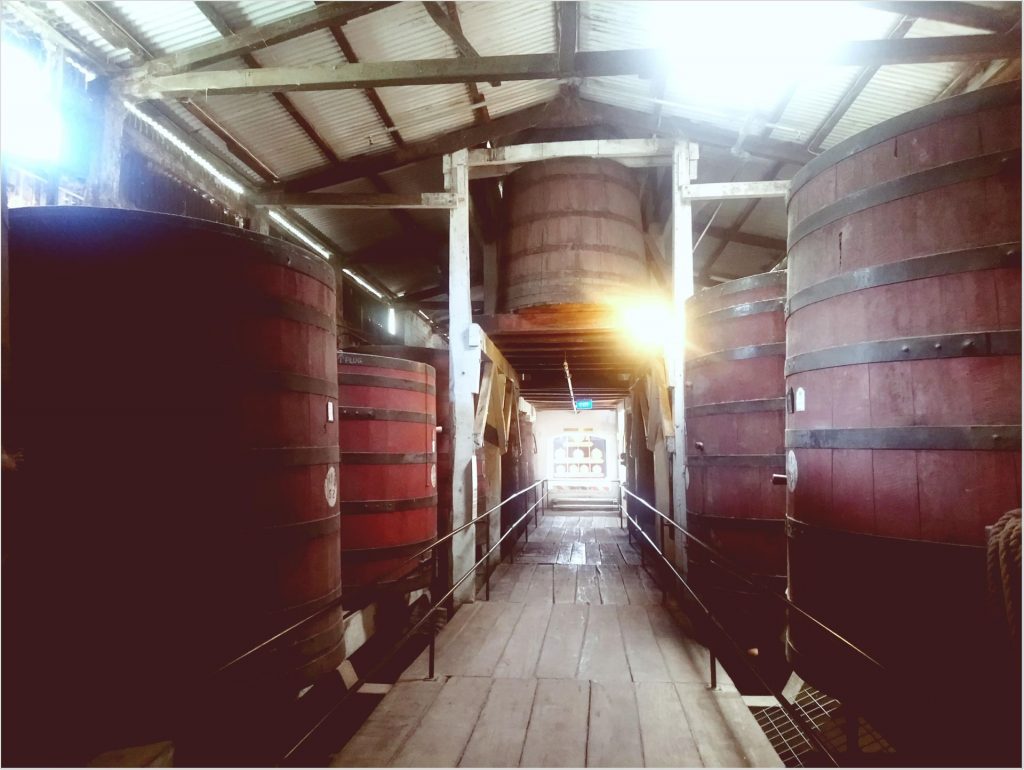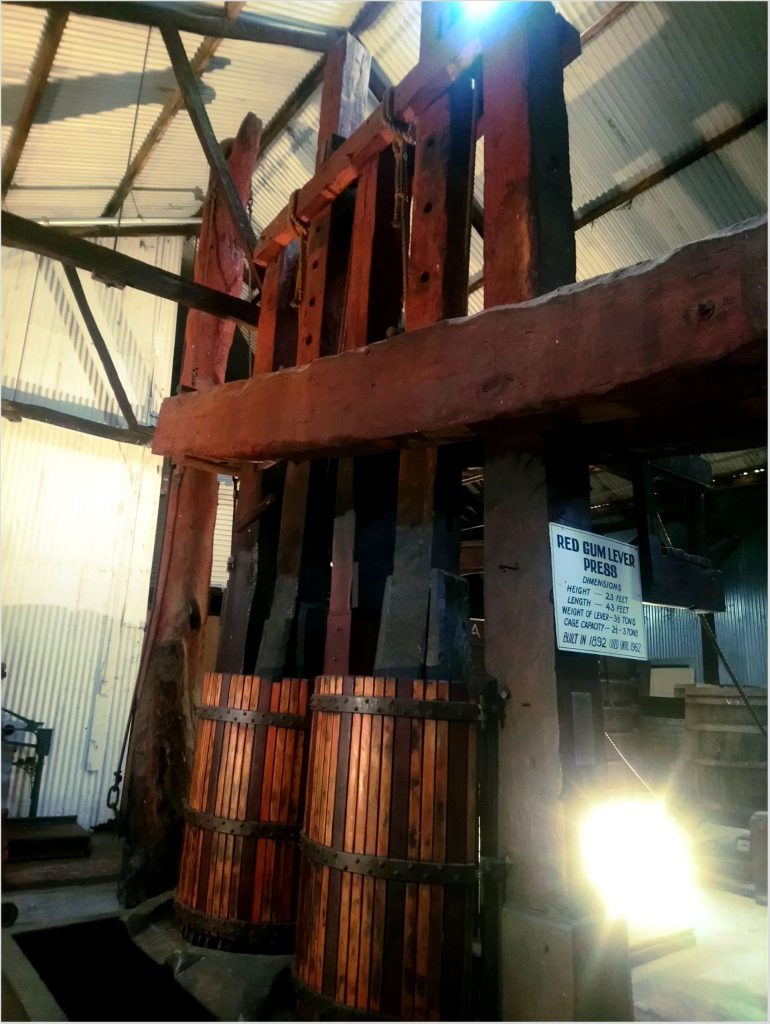
Bleasdale vinery
The history of Old Wine Press
During our Australian trip, we have visited vinery of Bleasdale in South Australia, where we got to know some history of winemaking. The information is provided by this place. Learn and enjoy!

The first wine press was built in 1860s by Frank I. It is thought that Frank was inspired by the basket press he saw in the winemaking areas along the River Tagus in Portugal. The first press featured a single basket while the second press he made, was a twin basket lever press. Both presses were built of red gum, with the density of the wood meaning the lever would not need to be pushed down to provide mechanical advantage.
In the 1860’s Frank I also fashioned a crusher – from red gum of course – that still exists today. A larger crusher was placed on the platform built above the cellar and vat hallway, where grapes would be forked in and crushed. The crushed grape skins and stalk would flow down wooden channels with the help of gravity, to nearby fermenting tanks where they would be kept for a period of time before being pressed.

How the Old Wine Press works:
Step 1: After the grapes are crushed, grape stalks were placed at the bottom of the closed baskets to act as filters.
Step 2: Pre-crushed grape must (skins and juice) was shoveled into the baskets before red gum lids were laid on top for the plungers to press down on. Each basket had a capacity of around 3 tonnes.
Step 3: The plungers were then lowered to rest on the red gum slabs by using a crowbar to rotate the rollers.
Step 4: The lever was then lifted, initially by using a capstan and later a tractor which was attached to the end of a pulley system.
Step 5: A steel pin was placed through the relevant hole of the plunger below the lever.
Step 6: The lever arm would be released and gravity would take its course, with the weight of the lever pressing down on the steel pin and slowly lowering the plungers down to press on the baskets’ content.
Step 7: The juice would flow out of the baskets and into the adjoining concrete tank, taking five to six hours to press the cages dry.
Step 8: The juice would be pumped by hand to the nearby underground tanks, which collectively have a capacity of 30, 000 gallons.
Step 9: The dry grape marc would be forked back into wheelbarrow and taken out into the vineyard to be spread and composted.
